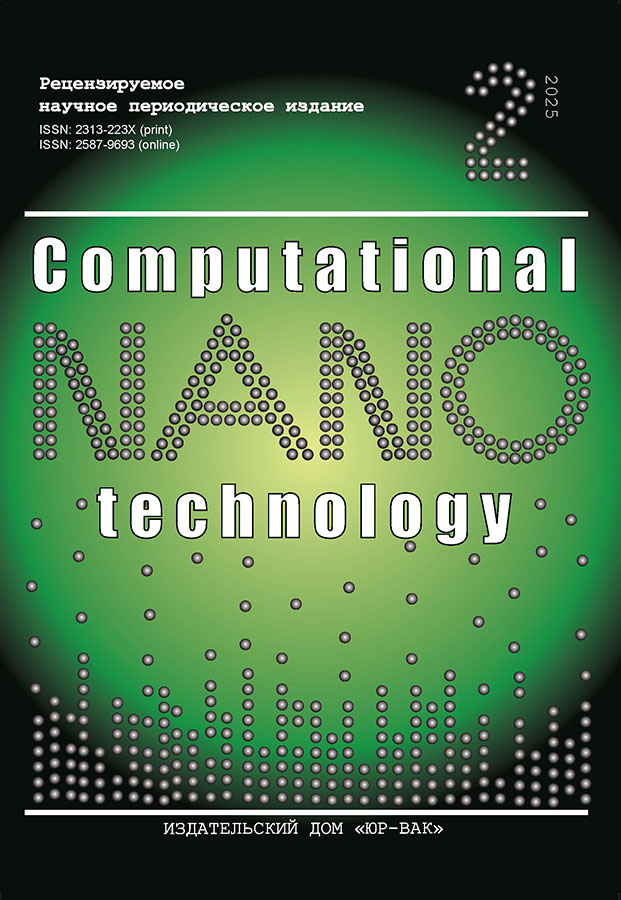A high-performance implementation of a stochastic TCP model in C++/AVX for performance analysis of distributed systems
- Autores: Sukhoplyuev D.I.1, Nazarov A.N.2
-
Afiliações:
- MIREA – Russian Technological University
- Federal Research Center Computer Science and Control of Russian Academy of Sciences
- Edição: Volume 12, Nº 2 (2025)
- Páginas: 68-74
- Seção: Mathematical and software of computеrs, complexes and computer networks
- URL: https://journals.eco-vector.com/2313-223X/article/view/689220
- DOI: https://doi.org/10.33693/2313-223X-2025-12-2-68-74
- EDN: https://elibrary.ru/QVVYTE
- ID: 689220
Citar
Texto integral
Resumo
The reliability of modern distributed systems directly depends on the stability of network connections; however, traditional monitoring methods are unable to adequately assess the stochastic nature of failures at the TCP transport protocol level. This paper proposes an approach based on Stochastic Differential Equations (SDEs) to model packet loss probability as a continuous random process, accounting for mean reversion and random fluctuations. A practical implementation of the model is presented in C++ using AVX-512 vector instructions for the numerical solution of the SDE via the Euler–Maruyama method. Experimental evaluation on an Intel Xeon Silver 4410Y server platform demonstrated that the module’s performance reaches 30.1 million estimations per second, which is nearly 9 times faster than reference scalar implementations. The results prove that the proposed stochastic approach is computationally efficient and can serve as a foundation for creating real-time monitoring and adaptive control systems capable of predicting TCP performance.
Texto integral
Sobre autores
Danil Sukhoplyuev
MIREA – Russian Technological University
Autor responsável pela correspondência
Email: sukhoplyuev.d.i@edu.mirea.ru
Código SPIN: 3931-0217
postgraduate student
Rússia, MoscowAlexey Nazarov
Federal Research Center Computer Science and Control of Russian Academy of Sciences
Email: a.nazarov06@bk.ru
ORCID ID: 0000-0002-0497-0296
Código SPIN: 6032-5302
Scopus Author ID: 7201780424
Dr. Sci. (Eng.), Professor
Rússia, MoscowBibliografia
- Allakin V.V., Budko N.P., Vasiliev N.V. A general approach to building advanced monitoring systems for distributed information and telecommunication networks. Control, Communications and Security Systems. 2021. No. 4. Pp. 125–227. (In Rus.). doi: 10.24412/2410-9916-2021-4-125-227.
- Sopin E.S., Talanova M.O., Gaidamaka Yu.V. Analysis of quality of service indicators for cloud computing systems with hysteresis control. T-Comm: Telecommunications and Transport. 2015. Vol. 9. No. 9. 54–60. (In Rus.). EDN: UMMUWN.
- Olifer V.G., Olifer N.A. Computer networks. Principles, technologies, protocols. 4th ed. Moscow: Piter, 2010. ISBN: 978-5-498-07389-7.
- Tawfeeg T.M., Yousif A., Hassan A. et al. Cloud dynamic load balancing and reactive fault tolerance techniques: A Systematic Literature Review (SLR). IEEE Access. 2022. No. 10. Pp. 71853–71873. doi: 10.1109/access.2022.3188645.
- Ilie S., Jackson K.R., Enright W.H. Adaptive time-stepping for the strong numerical solution of stochastic differential equations. Numerical Algorithms. 2015. Vol. 68. No. 4. Pp. 791–812. doi: 10.1007/s11075-014-9872-6. EDN: JYNZUT.
- Basynya E.A., Frantsuzova G.A., Gunko A.V. A self-organizing traffic control system for a computer network. Proceedings of Tomsk State University of Control Systems and Radioelectronics. 2014. No. 1(31). Pp. 179–184. (In Rus.). EDN: SFKPGZ.
- Cormen T.H., Leiserson C.E., Rivest R.L., Stein C. Introduction to algorithms. 2nd ed.). Moscow: Williams, 2009. ISBN: 978-5-8459-0857-5.
- Barabanova E.A., Vishnevskiy V.M., Vytovtov K.A., Semenova O.V. Methods for performance analysis of information-measuring systems under fault conditions. Journal of Instrument Engineering. 2022. Vol. 11. No. 4 (46). Pp. 49–59. (In Rus.). doi: 10.25210/jfop-2204-MA.
- Buslaev A.P., Kuchelev D.A., Yashina M.V. Dynamic systems and mathematical models of information traffic. T-Comm: Telecommunications and Transport. 2018. Vol. 12. No. 3. Pp. 22–38. (In Rus.). doi: 10.24411/2072-8735-2018-10049.
- Sukhoplyuev D.I., Nazarov A.N. Stochastic approaches to ensuring the stability of distributed replication systems. IT-Standart. 2025. No. 2 (43). Pp. 78–92. (In Rus.). EDN: RQBGUU.
- Sukhoplyuev D.I., Nazarov A.N. Modeling of stability in distributed systems based on the generalized Erdős–Rényi model and the Gilbert–Elliott model. Computational Nanotechnology. 2025. Vol. 12. No. 1. Pp. 79–88. (In Rus.). doi: 10.33693/2313-223X-2025-12-1-79-88.
- Shelukhin O.I., Tenyakshev A.M., Osin A.V. Fractal Processes in Telecommunications. Moscow: Radiotekhnika, 2003. ISBN: 5-93108-030-9.
- Padhye J., Firoiu V., Towsley D., Kurose J. Modeling TCP Reno performance: a simple model and its empirical validation. IEEE/ACM Transactions on Networking. 2000. Vol. 8. No. 2. Pp. 133–145. doi: 10.1109/90.842137.
- Li W., Liu J., Wang S. et al. Survey on traffic management in data center network: From link layer to application layer. IEEE Access. 2021. Vol. 9. Pp. 38427–8456. doi: 10.1109/ACCESS.2021.3064008. EDN: RMEAJI.
- Kim B., Kim J., Lee S. Exploring security enhancements in Kubernetes CNI: A deep dive into network policies. IEEE Access. 2025. Vol. 13. Pp. 35322–35338. doi: 10.1109/access.2025.3543841. EDN: RVUJWM.
Arquivos suplementares











